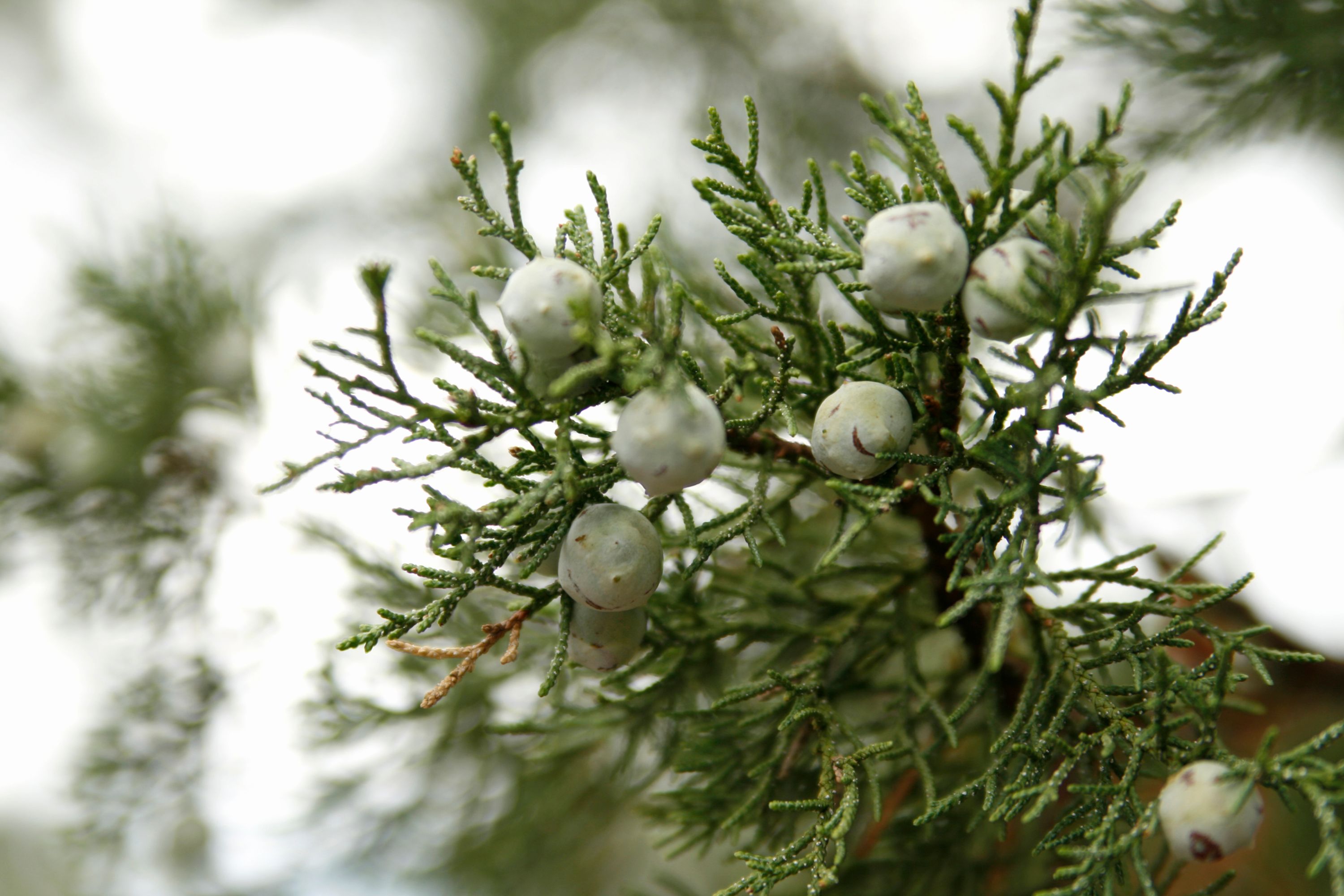Alligator juniper
(Juniperus deppeana)

Description
Juniperus deppeana (alligator juniper or checkerbark juniper; Native American names include táscate and tláscal) is a small to medium-sized tree reaching 10–15 m (rarely to 25 m) tall. It is native to central and northern Mexico (from Oaxaca northward) and the southwestern United States (Arizona, New Mexico, western Texas). It grows at moderate altitudes of 750–2,700 meters (2,460–8,860 ft) on dry soils. The bark is usually very distinctive, unlike other junipers, hard, dark gray-brown, cracked into small square plates superficially resembling alligator skin; it is however sometimes like other junipers, with stringy vertical fissuring. The shoots are 1-1.5 mm diameter; the leaves are arranged in opposite decussate pairs or whorls of three; the adult leaves are scale-like, 1-2.5 mm long (to 5 mm on lead shoots) and 1-1.5 mm broad. The juvenile leaves (on young seedlings only) are needle-like, 5–10 mm long. The cones are berry-like, 7–15 mm in diameter, green maturing orange-brown with a whitish waxy bloom, and contain 2–6 seeds; they are mature in about 18 months, and are eaten by birds and mammals. The male cones are 4–6 mm long, and shed their pollen in spring. It is largely dioecious, producing cones of only one sex on each tree, but occasional trees are monoecious. Junipers are coniferous trees and shrubs in the genus Juniperus of the cypress family Cupressaceae. Depending on taxonomic viewpoint, between 50 and 67 species of junipers are widely distributed throughout the Northern Hemisphere, from the Arctic, south to tropical Africa, throughout parts of western, central and southern Asia, east to eastern Tibet in the Old World, and in the mountains of Central America. The highest-known juniper forest occurs at an altitude of 4,900 metres (16,100 ft) in southeastern Tibet and the northern Himalayas, creating one of the highest tree lines on earth. Junipers vary in size and shape from tall trees, 20–40 metres (66–131 ft) tall, to columnar or low-spreading shrubs with long, trailing branches. They are evergreen with needle-like and/or scale-like leaves. They can be either monoecious or dioecious. The female seed cones are very distinctive, with fleshy, fruit-like coalescing scales which fuse together to form a "berry"-like structure (galbulus), 4–27 millimetres (3⁄16–1+1⁄16 in) long, with one to 12 unwinged, hard-shelled seeds.
Taxonomic tree:







